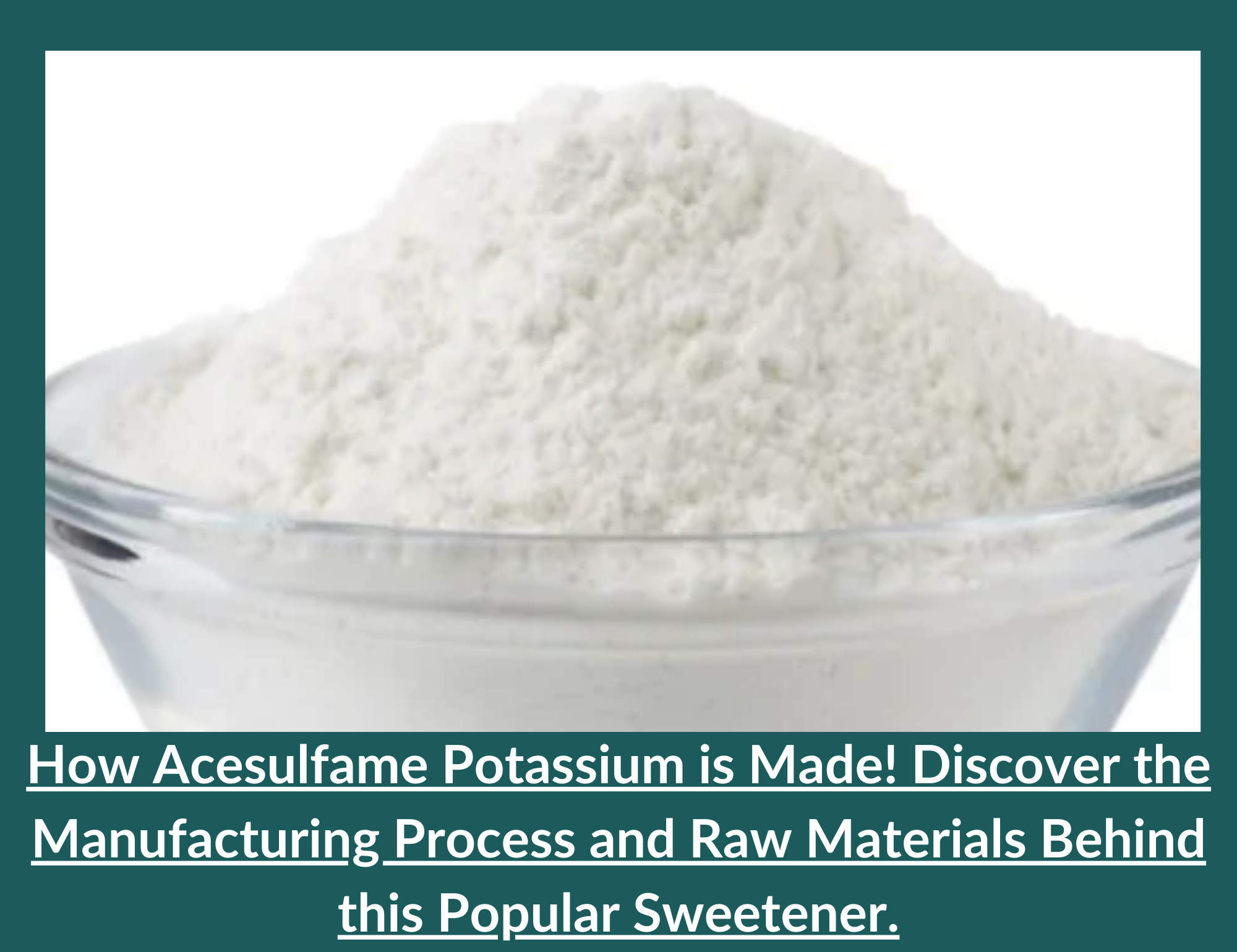Acesulfame potassium, also known as acesulfame K or Ace-K, is a high-intensity sweetener widely used in the food and beverage industry. It is a potassium salt of 6-methyl-1,2,3-oxathiazin-4(3H)-one-2,2-dioxide and is approximately 200 times sweeter than sugar.
This article explores its production, including the manufacturing process and the raw materials used.
Manufacturing Process of Acesulfame K
It is manufactured through a multi-step chemical process that involves several reactions. The overall process can be summarised as follows:

- The first step involves the preparation of acetoacetic acid, which is achieved by reacting diketene with formaldehyde to form diacetone alcohol. Diacetone alcohol is then oxidised to acetoacetic acid using nitric acid.
- The next step involves the reaction of acetoacetic acid with an amine, typically methoxyethylamine, to form 4,4-dimethylimidazolidinone.
- In the third step, 4,4-dimethylimidazolidinone is chlorinated and sulfonated to form 6-chloro-1,2,3-oxathiazin-4(3H)-one-2,2-dioxide.
- The final step involves the reaction of 6-chloro-1,2,3-oxathiane-4(3H)-one-2,2-dioxide with potassium hydroxide to form acesulfame K.
Raw Materials Used
The raw materials used in the production are readily available and include:

- Diketene: Diketene is a colourless liquid used in the preparation of acetoacetic acid. It is produced by heating acetic anhydride with ketene.
- Formaldehyde: Formaldehyde is a colourless gas used in the preparation of acetoacetic acid. The oxidation of methanol typically produces it.
- Nitric Acid: Nitric acid is a strong acid that oxidises diacetone alcohol to acetoacetic acid.
- Amine: The amine used to produce of acesulfame potassium is typically methoxyethylamine.
- Chlorine: Chlorine is used to chlorinate and sulfonate 4,4-dimethylimidazolidinone.
- Potassium Hydroxide: Potassium hydroxide converts 6-chloro-1,2,3-oxathiazin-4(3H)-one-2,2-dioxide to acesulfame K.
Looking for a reliable source to procure Acesulfame Potassium? EasyBuy offers a hassle-free solution to the sourcing challenges commonly faced by food manufacturers. Our extensive platform allows you to take advantage of the best deals and effortless procurement, saving you time and money.
Get started with EasyBuy now and enjoy seamless procurement with the best deals in the market. Order now!
Citations:
- Khorram, M. S., Azizi, M., & Asgari, G. (2012). Acesulfame K production: a comprehensive review. International Journal of Food Properties, 15(4), 803-814.
- Khan, N. M., & Mehmood, S. (2019). Production of Acesulfame K: A Review. International Journal of Scientific and Engineering Research, 10(4), 706-710.
- Joshi, V., & Adhikari, S. (2016). A Comprehensive Review on Acesulfame K: Production, Safety and Application in Food. International Journal of Food Science and Nutrition, 1(2), 15-22.
- JECFA. (2000). Acesulfame potassium. In WHO Food Additives Series: 44. Toxicological Evaluation of Certain Food Additives with a Review of General Principles and of Specifications (pp. 11-49). World Health Organization.








